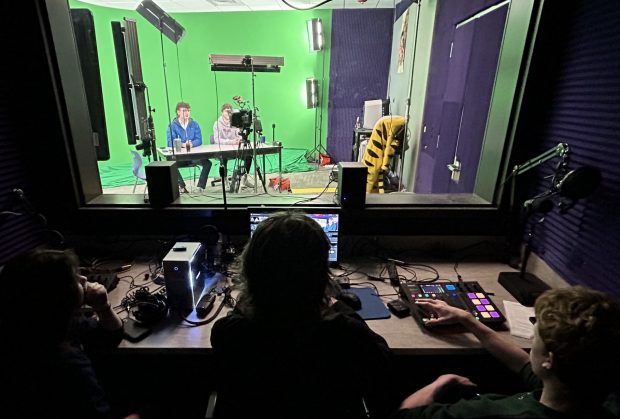
Editor’s Note: This story is part of a series on Idaho’s new investments in career-technical education (CTE) programs. Reporter Darren Svan traveled the state to find out where students are going after graduation and how they perform on industry certification exams. This months-long series was supported on a grant from the Education Writers Association.
Idaho is spending millions on solutions for teenagers who want a technical job after high school, but state leaders haven’t found a way to evaluate the impact of taxpayer investments.
First, measuring the success of secondary CTE programs elicits varying conclusions depending on who you ask:
- Teachers highlight the value of workplace “soft skills,” like integrity, responsibility, perseverance and accountability.
- Education leaders lean on graduation rates and the growth of programs.
- Parents appreciate their child finding a purpose that may lead to a good-paying job.
Second, there’s no consistent reporting mechanism established for keeping track of job placement or industry-specific certifications and licenses attained by high school students.
Backhoes are digging, equipment is getting installed and invoices are being paid but an accountability component is still under construction.

“Is the program meeting the expectations that we say it should meet? If we’re talking about a return on investment, it’s more difficult because we would have to define the ROI we want to have,” said Clay Long, the Idaho Division of Career Technical Education (IDCTE) administrator.
The Idaho Career Ready Students council has allocated nearly all of Superintendent Debbie Critchfield’s $45 million ICRS grants, with the bulk headed for purchasing equipment, constructing technical centers and building capacity.
Yet despite this year’s 315% increase in spending, the state hasn’t settled on the best method to measure if the investment is solving the intended solutions on local and regional industry needs. However, state leaders are just now beginning to hash-out accountability solutions.
Teacher retention and enrollment growth are considerations but two practical measures — earning an industry certification or successful job placement — aren’t thoroughly tracked.
Some results are obtained through a school-level, self-reporting system but it’s anecdotal evidence.
“We’re trying to create a mechanism,” said Robbie Reno, principal of Swan Falls High School. “You can’t mandate every graduate to respond to us.”
Long agrees. There isn’t a way to validate where students secure employment and if that job is related to their CTE pathway or capstone coursework.
But policymakers are searching for results.
A legislative member of the council, Sen. Kevin Cook, R-Idaho Falls, wondered if students are utilizing career technical skills to gain employment or move into a college program aligned with their high school training.
The challenge with industry certifications is different. Industry representatives — not educators — issue tests for certification and aren’t obligated to report results.
“We’re teaching, training and preparing, so let’s give them the documentation to show what they’ve done,” said Allison Duman, the ICRS coordinator.
Idaho knows how many industry certification tests are taken each year and the cost, but not student performance.
Technical education programs are growing, and kids are enjoying them, but will sporadic success stories and increasing enrollment be enough to justify spending decisions or convince lawmakers to appropriate more grant money?
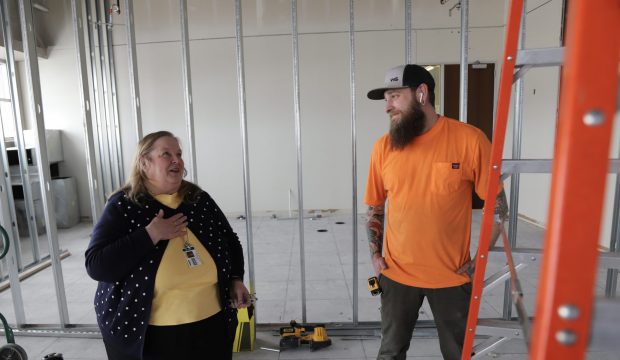
Surefire way to employment: industry certifications
Industry certifications are a way to gauge workforce readiness but state leaders have never asked IDCTE to track this data. EdNews asked and found some schools are and some aren’t.
In the Nampa School District, 84% of CTE concentrators left high school with an industry-specific certification.
“Industry-specific certifications and licenses provide an avenue to demonstrate the skills learned through a specific CTE program,” Duman said.
Not many districts collect certification results because the state isn’t asking them to.
Instead, IDCTE uses the technical skills assessment (TSA) and SkillStack test to measure competence. TSAs are written, program-specific assessments taken at the end of a pathway, while SkillStacks allow educators to test for mastery of skills in specific programs.
TSA and SkillStack credentials are not industry accepted tests.
But industry certifications open employment doors and they’re available to Idaho students at no cost. In fact, there are over 200 certifications.
In three years, industry testing cost the state just under $ 1 million for 14,204 professional certification exams. The bulk of testing occurred in healthcare, culinary and welding. Last year, Pocatello, West Ada and Payette requested the most exams.
The state knows what it spent on testing but not its return on investment — student performance.
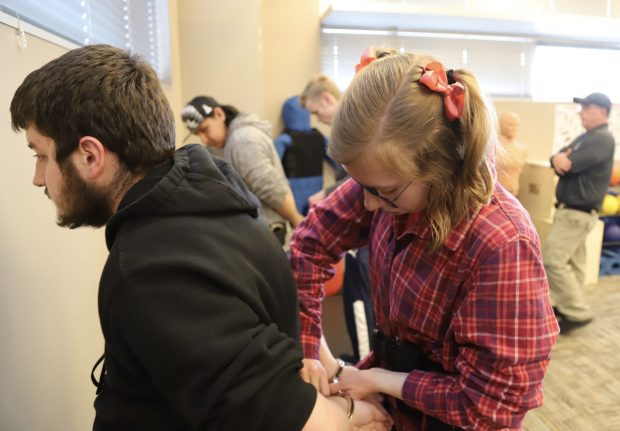
We selected five programs at Kootenai Career Technical Center and spoke with each instructor to find out how capstone students (students at the end of their pathway) fared with their industry certification exams. K-Tec is a cooperative between Lakeland, Coeur d’Alene and Post Falls school districts. Here are the results:
- National Center for Construction Education Research assessment — to achieve certification, students in construction must pass and also maintain a B average at graduation. Seniors achieved a 78% success rate.
- Environmental Protection Agency Refrigerant Certification — there are four sections and students in HVAC can test up to four times. They earned a 100% passing rate.
- CompTIA — the school is changing its certification assessment next year. The latest data reveals that 14% of students in computer repair successfully obtained an entry-level qualification for the information technology industry.
- Certified Nursing Assistant assessment — in the last graduating class, every CNA student who tested at North Idaho College Workforce Training Center passed the exam.
- Automotive Service Excellence — students in automotive, diesel and collision repair use the ASE test to demonstrate a level of expertise. They passed the nationally recognized test at a rate of 90%.
Nampa had 374 CTE graduates last year and most left with a certification: 315 seniors graduated with one certification; 92 with two; 23 with three; six with four; and one with five certifications. Examples include the AWS GMAW 1-4G, Beef Quality Assurance, Ford Ace Certification, National Academy of Sports Medicine Certified Personal Trainer and OSHA 10-Hour Construction Industry Training Card.
Are life skills a measure of success?
Teenagers are learning how to succeed in the workplace, and parents are pleased, but will taxpayers be satisfied?
“Parents will drive by this building one day and think ‘I want my kid to go there because they’re helping them become young adults,’” said longtime educator Rhonda Naftz, about the new Portneuf Valley Technical Education and Career Campus in Pocatello.
When students walk into a CTE center or classroom, educators project an authentic job experience, teaching them collaborative work, the importance of putting tools away, expected behaviors and maintaining a focus on safety.
To build character and grit, a staple in any CTE classroom is the formula “finish what you start.”
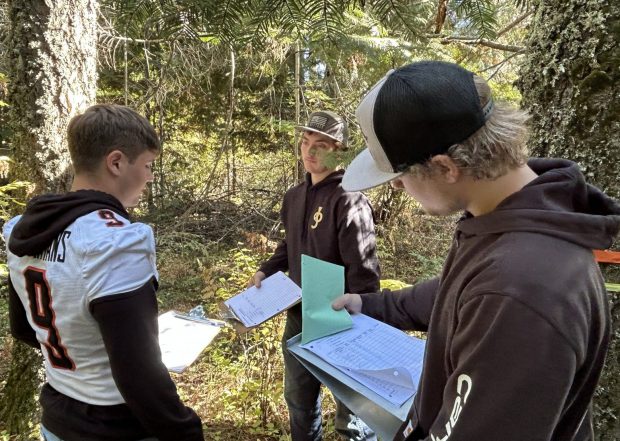
“To be honest with you, the biggest thing that we have a hard time finding are guys that just want to work,” said Joey Vail, who works with welding supplies for Norco in Chubbuck.
Cellphones are often banned in CTE labs and shops. They work under vehicles, operate high-tech milling machines, process animals or heat metal. A myriad of skills are taught through real-world experiences using industry equipment.
“It doesn’t feel like school,” said Dylan Price, a Centennial High School senior who plans to study automotive technology after graduation.
Kristin Parker, a college and career counselor in Rathdrum, suggested an additional measure — the community’s perception.
Sunroc is an asphalt paving company in Kuna that hires apprentices from the Swan Falls High School diesel mechanics program. They recently hired a student after graduation and currently have two apprentices on staff.
“We are pleased with the outcome of the program. It has been refreshing to see such enthusiasm and work ethic in this younger generation,” said Jesse Hoseley, a Sunroc equipment and student intern supervisor.
Finding out where CTE graduates end up is problematic
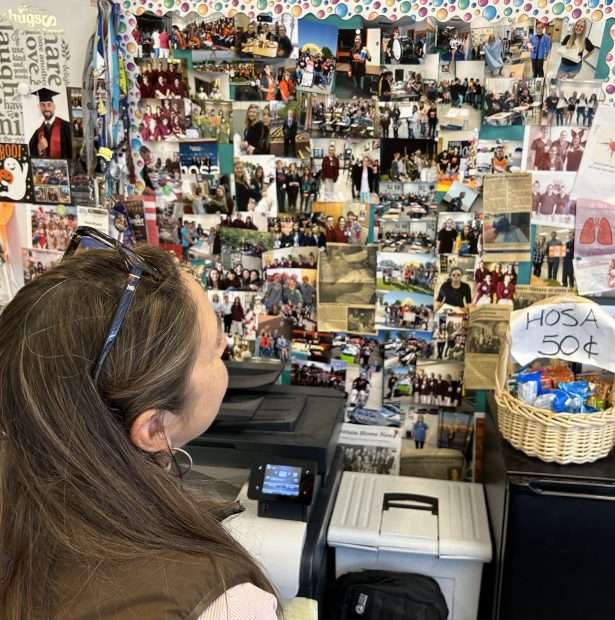
School districts conduct post-graduation placement surveys but the self-reported results are incomplete because it’s voluntary and there is no statewide process in place.
“We don’t have a way to map students to what industry or what their salary is, so it really is left up to the local district to figure that stuff out,” Long said.
There are some pockets of success but results are inconsistent. Some schools conduct their surveys in May and others in the fall, after students enter the workplace.
They have a general idea of what students do after graduation but not if they found employment related to their CTE experience.
Idaho knows that 95% of CTE concentrators — a junior or senior in a capstone course — went on to college, the workforce, military or a church mission after graduation.
EdNews looked for answers and the results ranged from highly-detailed to scant.
The Career Technical Education Center in Idaho Falls provided detailed information for more than 25 recent graduates. There are six examples.
Alex Krusko works in technical support for Idaho National Laboratory, Heather Jensen is a pharmacy technician with Amazon, Wilmer Schute is welding in the Louisiana oil fields, Erin Black is an EMT for Gold Cross, Andrew Christensen is working for the Bureau of Land Management and Nick Poulsen is working for Firth Fire.
Last year, 45% of C-TEC graduates went into the workforce; 40% attended a college or trade school; 13% selected a service program or mission; and 2% went into the military.
“There are some things we simply can’t get,” Duman said.
